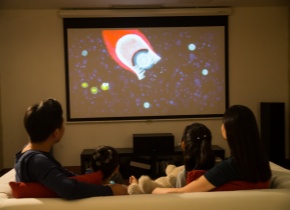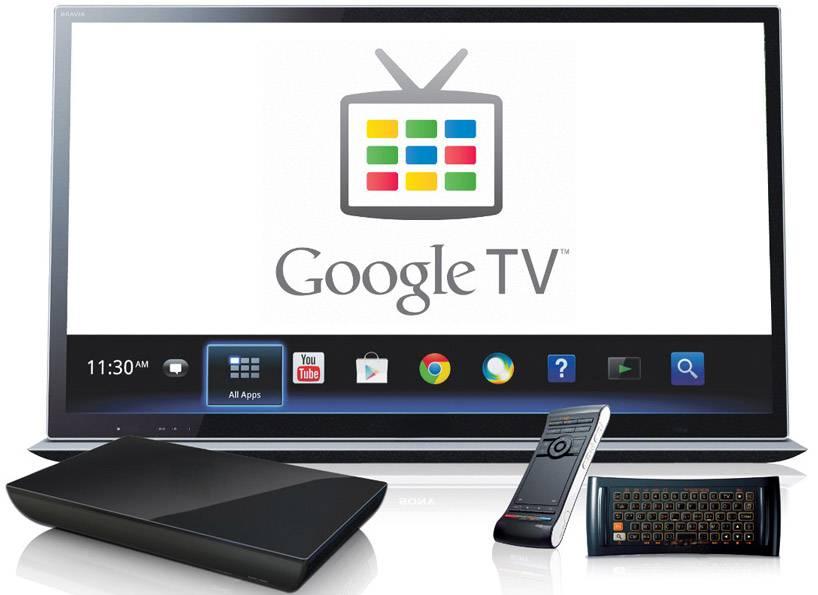Google/Android TV CDD Details Requirements
I. What is a Google/Android TV Device?
A Google/Android TV device refers to a television system based on the Android operating system, designed for users to enjoy entertainment content while seated approximately 10 feet away (commonly referred to as a "10-foot user interface" or "big-screen entertainment experience"). These devices allow users to watch digital media, movies, live TV, play games, and/or use apps.

II. Types of Google/Android TV Devices
1. Embedded Screens: Devices with a screen size of over 24 inches (e.g., televisions).
2. Set-Top Boxes: Devices with video output ports such as VGA, HDMI, DisplayPort, or wireless connections for attaching to external screens.
Both types must provide a mechanism, such as a remote control, to allow users to navigate the interface from a distance of approximately 10 feet.
III. Remote Control Requirements
1. The remote must allow users to navigate and input commands without touch, using core navigation buttons.
2. It must support directional keys (D-pad).
3. It must include "Home" and "Back" buttons.
4. The "Back" button must send both regular press and long press events to the foreground app.
IV. Google/Android TV Hardware Requirements
1. Must support Bluetooth and Bluetooth LE.
2. Must provide at least 4 GB of non-volatile storage for app data (recommended ROM of 8 GB or more).
3. If a USB port is supported, it must support an external camera.
4. If the TV device is 32-bit, it must have at least 896 MB of memory for the kernel and user space (recommended RAM of 1 GB or more). If it's 64-bit, it must have at least 1,280 MB of memory for the kernel and user space (recommended RAM of 2 GB or more).
5. Must include a microphone, an audio output mechanism, and support for game controllers.
V. Google/Android TV Multimedia Support
The TV device must support the following audio encoding and decoding formats and make them available to third-party apps:
- MPEG-4 AAC Profile (AAC LC)
- MPEG-4 HE AAC Profile (AAC+)
- AAC ELD (Enhanced Low Delay AAC)
The device must also support the following video encoding formats for third-party apps: H.264, VP8.
VI. Google/Android TV Software Requirements
1. For all public intent filter patterns defined by common intents, the device must preload one or more apps or service components that act as intent handlers.
2. Must provide a full implementation of the `android.webkit.Webview` API.
3. If the device supports a lock screen, it must display lock screen notifications that include media notification templates.
4. Picture-in-Picture (PIP) multi-window mode is strongly recommended, and the device must support third-party accessibility services. It is also highly recommended to preload accessibility services on the device.
5. The device must support the installation of third-party TTS (Text-to-Speech) engines, and it is highly recommended to include a TTS engine that supports the languages available on the device.
6. Must support the TV Input Framework.
VII. Google/Android TV Performance Requirements
1. Consistent Frame Latency: Frame delay or inconsistency in frame rendering should not exceed 5 frames per second, and ideally should be lower than 1 frame per second.
2. Sequential and Random Performance:
- Sequential write performance must be at least 5 MB/s.
- Random write performance must be at least 0.5 MB/s.
- Sequential read performance must be at least 15 MB/s.
- Random read performance must be at least 3.5 MB/s.
VIII. Google/Android TV Required Feature Declarations
The following features must be declared for Android TV devices:
1. `android.hardware.gamepad`
2. `android.hardware.audio.output`
3. `android.hardware.type.television`
4. `android.software.leanback`
5. `android.hardware.security.model.compatible`
IX. Difference Between Android TV and Google TV
Android ATV (Android TV) is a TV operating system based on the Android operating system (Android OS), specially designed for smart TVs and set-top boxes. It provides a user-friendly interface that supports app downloads, video playback, music playback, gaming, and screen projection.ATV integrates Google apps and services such as Google Play, YouTube, Google Assistant, etc. to provide users with a complete multimedia entertainment experience.
GTV (Google TV) is another Google platform for smart TVs and streaming devices and is closely related to Android TV.Google TV can be regarded as an upgraded or enhanced version of Android TV, which offers a more advanced user interface, recommender system and content integration features.GTV not only supports Google's apps, but also focuses on optimising content discovery and navigation, making it easier for users to find their favourite movies, TV shows and apps.
Feel free to contact us for inquiries about Google TV certification. We can also handle certifications for Google EDLA, Google MADA, Google Auto, Google Lens, Google ARCore, Google TADA, Google Android Watch, Google Android TV, GTV, Google Fast Pair certification and Spatial Audio certification testing for earphone,and other related projects.
-

Deeplight | Outsourced Testing Services for Google TV TADA / Netflix / Amazon Prime Video / YouTube and More
Deeplight is dedicated to providing comprehensive outsourced testing and certification services for Google GMS. We boast a professional technical testing team specializing in streaming applications such as Google TV, Netflix, Amazon Prime, and YouTube, equipped with exclusive external broadband testing environments and a wide array of proprietary test kits.2025-04-30
-

Detailed Explanation of DRM Widevine L1, L2, L3 and Its Relationship with Google GMS Certification
Widevine is Google‘s Digital Rights Management (DRM) technology, widely used in the video streaming industry (e.g., Netflix, Disney+, YouTube Premium, etc.) to protect high-value content from illegal copying or distribution. The core goal is to ensure that content is only played on authorized devices and in legitimate user scenarios through encryption and permission control.2025-04-30
-

A Series of Testing Tools Used for Google TV Device Certification
Google TV devices, such as TVs, TV boxes, and projectors, require TADA certification, which involves passing tests like CTS, GTS, VTS, and TVTS to obtain certification.2024-09-11
-

Google/Android TV CDD Details Requirements
A Google/Android TV device refers to an Android-based television device, providing an entertainment interface suitable for users viewing television programs from approximately 10 feet away ("interface for large-screen entertainment experiences" or "interface for viewing from 10 feet away"). It allows users to watch digital media, movies, TV broadcasts, play games, and/or use applications.2024-09-11
-

Google Android TV/Set-Top Box Certification for Android ATV
Google Android ATV certification refers to the whole machine certification, submitted by ODM/OEM to Google to do the certification test, SOC manufacturers do not need to do the chip-level certification.Android TV was introduced at Google I/O on 26 June 2014, specially designed for TV and set-top box products designed for the application service package. Based on the Android AOSP version, plus the GTVS package can be compiled out of the Android TV Firmware.2024-09-11







